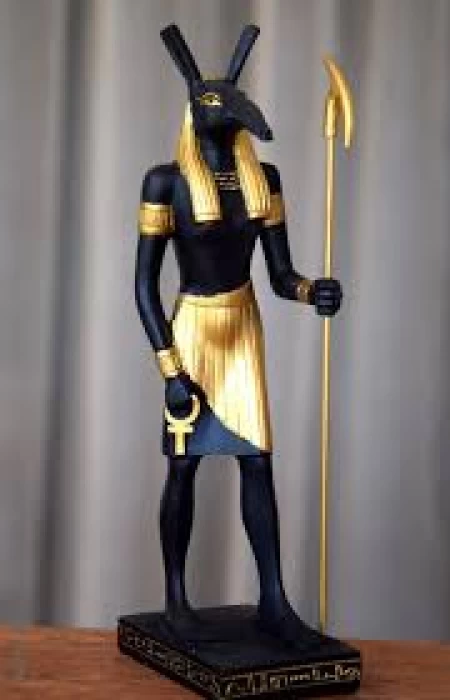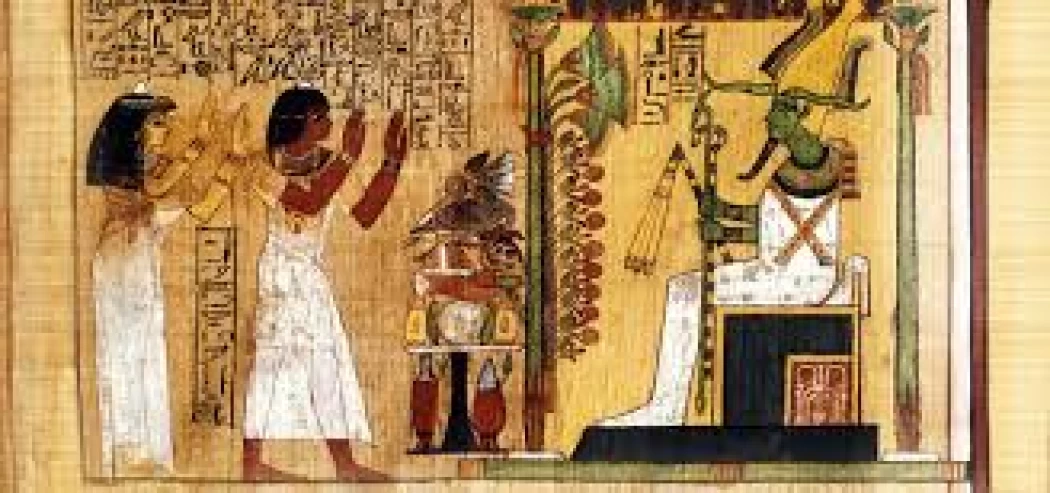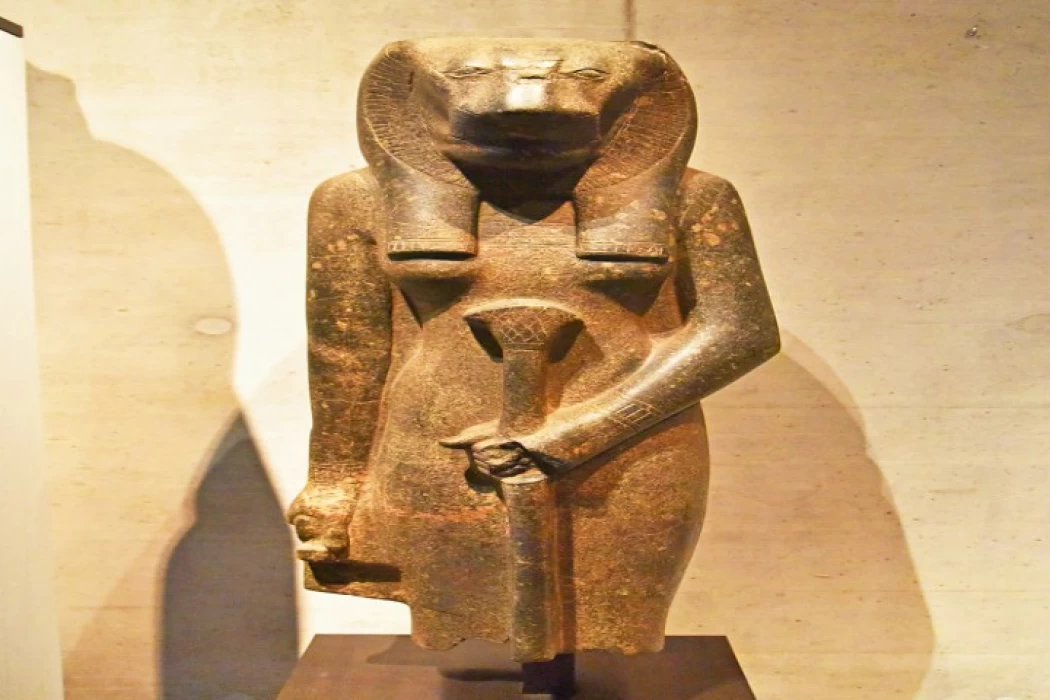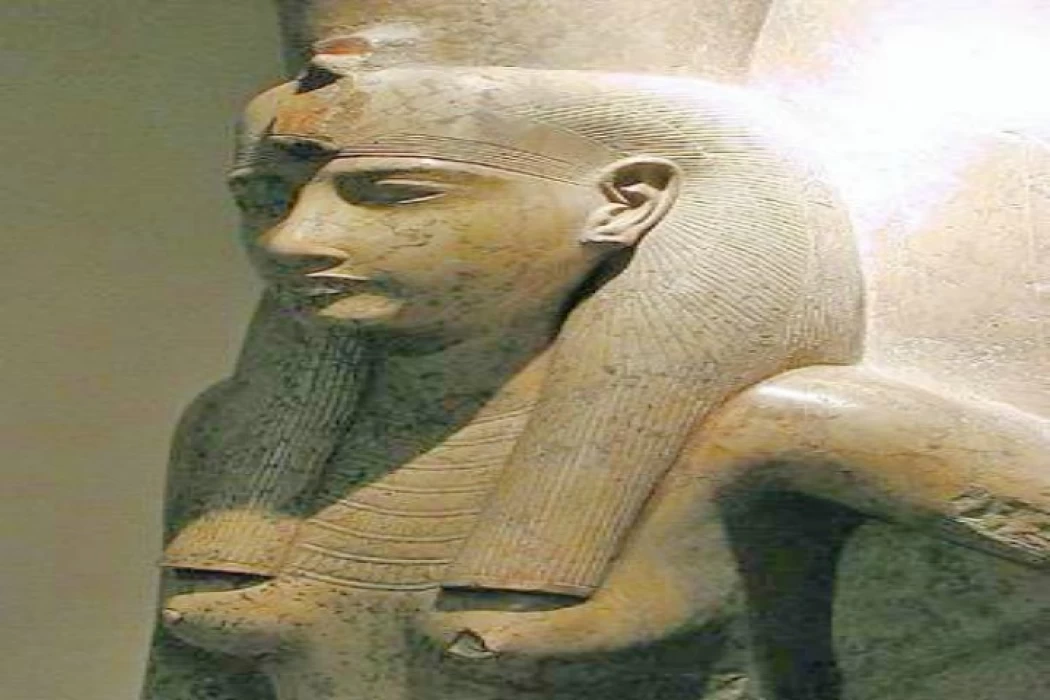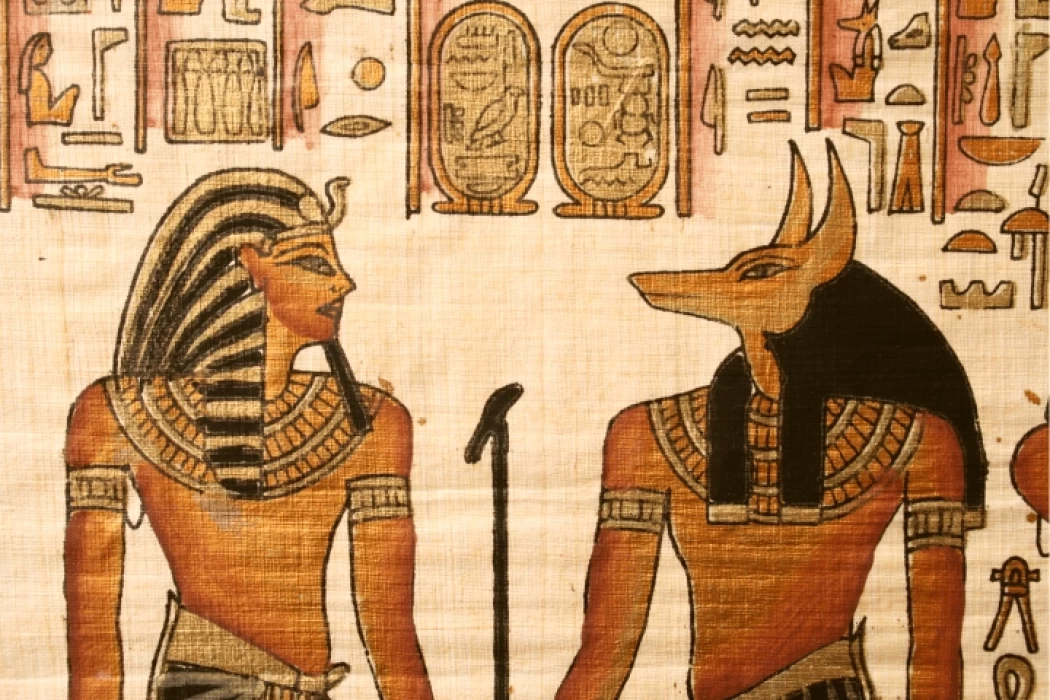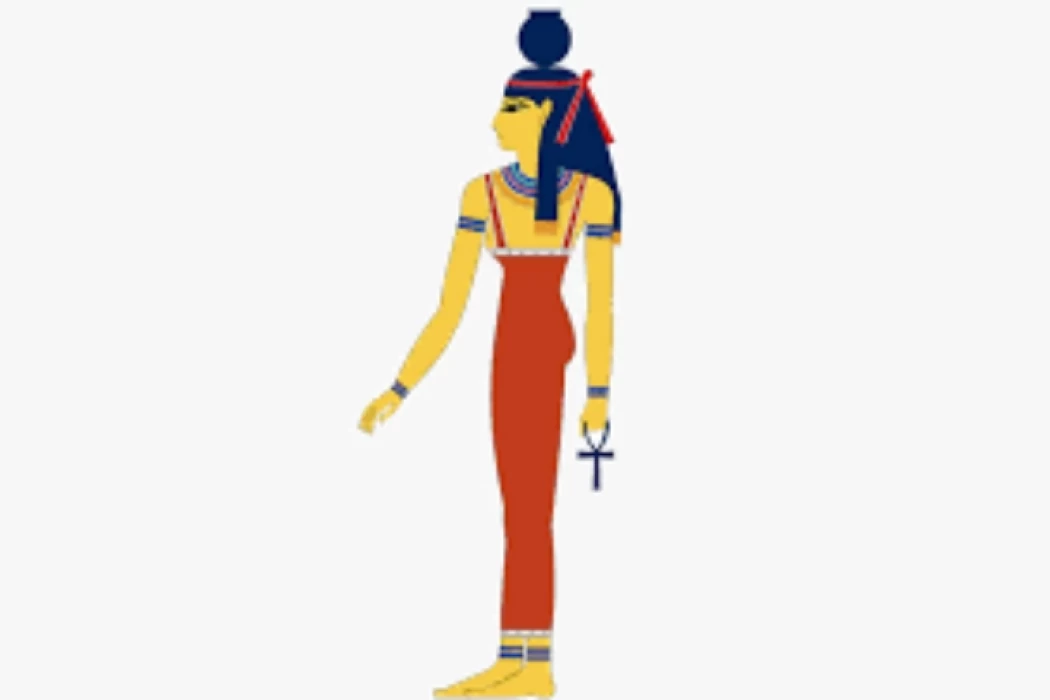Admin
"The god Amun" is the official deity of the ancient Egyptian kingdom in most historical periods, he is the master of the gods and the creator of the universe of ancient Egypt. And the word Amun in the ancient Egyptian language means "hidden, secret, invisible", and all are translations of the word "Amun".
Admin
Goddess Isis | The Egyptian Goddess of Magic and Healing
The wife of the god (Osiris), "Isis" was known to the ancient Egyptians as the goddess of the moon, whose symbol is a woman on whose forehead is the lunar disk. She is also known as the goddess of magic. She was worshiped in various places, and her cult spread in the era of the Ptolemies and Romans beyond the Egyptian borders, so that she had her temples, festivals and priests in all directions of the Roman state, which became the public deity of the whole universe.
Admin
God Osiris | Egyptian God of the Afterlife and Resurrection
"Osiris", the lord of eternity, the god of the realm of the dead. is symbolized in the form of a man wearing a crown, who is the head of the general trinity. "Osiris-Isis-Hor." He is the chief judge of the Egyptian court of the dead, one of the main ninth sacred gods of the ancient Egyptian religion. He was commissioned as savior of the dead and ruler of the underworld.
Admin
God Horus | The Falcon-Headed God of the Sky
Over the centuries, many brave kings have ruled Egypt. Some of them were weakened. Some others were attacked by strong armies and many faced betrayal by those closest to them. But after all, the kings of Egypt become stronger and seek revenge just like our king here Horus.
Admin
God Thoth | God of Wisdom in Ancient Egypt
Thoth or Tut, the god of wisdom among the pharaohs. The ancient Egyptians considered him to be the one who taught them writing and arithmetic and always photographed him holding a pen and slate to write on. He played an important role in the court of the dead, where the ancient Egyptians believed that the dead person was brought after the resurrection to perform the operation of weighing his heart before the pen of the goddess of truth, Maat.
Admin
God Seth | Egyptian God of War | God of the Desert in Egypt Mythology
Set is one of the deities of ancient Egypt, the god of storms and violence. He is called Seth Nabateans, ie the Seth belonging to the city of Nobet, and is the god of evil in ancient Egypt, where he killed his brother Osiris. Several battles took place between him and Horus, which ended with the victory of the good guys (Horus).
Admin
Goddess Nephthys | Mistress of the House
Nephthys, an Egyptian goddess, daughter of Geb and Nut, sister of Isis, Osiris, and Seth, The unremarkable quality of her name suggested that the goddess was no more than a creation of myth, intended to give Seth a partner in parallel to the Isis-Osiris couple.
Admin
Goddess Hathor | Goddess of Fertility, Love, and Motherhood
She is one of the ancient Egyptian gods. The idol "Hathor" was one of the most important and famous Egyptian deities and even one of the most widespread in history. Some believe that her cult appeared in prehistoric times, while others believe that she appeared since the beginning of the Old Kingdom.
Admin
God Anubis | God of the Necropolis
Anubis is considered the god of death among the pharaohs. They find a carving in ancient tombs, speaking of Anubis as a guide for the dead, the guardian of the nether world. His cult moved from the reign of the Fifth Dynasty of the god Osiris when he was worshiped in ancient Egypt.
Admin
The Book of the Dead | Ancient Egyptian Funerary Text
The Book of the Dead is placed with the dead to ensure their journey to the afterlife. It is a collection of religious documents and funerary texts that were used in ancient Egypt and were used from the beginning of the modern era of the ancient Egyptian state until about 1550 BC.
Admin
Goddess Mut | The Vulture Goddess of the Sky
Mut is one of the oldest goddesses embodying the sky and therefore had great importance in the beliefs of ancient Egypt. The cult of Mut increased in importance during the New Kingdom and Amenhotep III had a sacred lake built in the Temple of Karnak for her worship.
Admin
God Ptah | the God of Creation and Craftsmen
"Ptah" in ancient Egyptian religion is the god in whom the power of the creation process resides and the first deity in creation. Therefore, all the kings of Egypt who ruled it for long periods of time were similar to him. The Egyptians believed that he was the creator, the inspiration, and the protector of artists, so he was the ideal for artists.
Admin
God Serapis | Ancient Egyptian Gods
Serapis was worshipped as a god of healing and the other world and was always depicted as a man with a beard and curly hair, with clothes on the top of his head. His temple, the "Serapeum", in the city of Alexandria was the most important, and patients used to go to this temple from all over for healing.
Admin
The Story of Isis and Osiris | The Osiris Myth
Isis and Osiris, the ancient myth of pharaonic love that was more than a thousand years before the stories of Qais and Lily or Romeo and Juliet, that mythical sacrificial love that made Isis and Osiris the most beloved gods of the ancient Egyptians and made the god Six hated for doing evil and trying to kill his brother.
Admin
God Bes | God of Childbirth | Ancient Egyptian Dwarf God
Bess is one of the ancient Egyptian deities and was very popular during the New Empire. He is represented by a puffy-cheeked dwarf with a fan-shaped chin to strike terror into the hearts of the wicked. His mention was found abundantly in the Temple of Dandara, and he was worshipped in the Roman era as the Healer who was armed with a shield and sword.
Admin
God Sobek
Subic or Sobek is the god of ancient Egypt with nature. He was associated with royal power, fertility, and military prowess. He was also considered a protective god against dangers with evil-repelling qualities, associated in particular with the dangers posed by the Nile due to its flooding.
Admin
God Aton | Aten God of Egypt
Aton is the deity announced by King Akhenaton and considered the sun god, and the light of Aton benefits all races, representing Aton in the form of a solar disk, with its rays ending in human hands, to give life and prosperity to the royal family, and after the death of Akhenaton. Amun returned again, to his first place, as one of the Egyptian gods.
Admin
Goddess Sekhmet
Sekhmet is a mythological figure of ancient Egypt, depicted as a lioness-headed woman seated on a throne. Among her titles are the great lady, the beloved of Ptah, the eye of Ra, the lady of war, the lady of the earthly, "Upper and Lower Egypt", the mighty, and many other titles, meaning that her name is the most powerful, and she was worshipped at the entrances of the valleys, especially in Upper Egypt.
Admin
Goddess Nut | Goddess of the Sky
Nut is the goddess of the sky in ancient Egyptian religion and is usually drawn with stars. According to the religious beliefs of the ancient Egyptians, she is the sister of Jeb, god of the earth, and her father Shu, god of the air, and her mother Tefnut, the goddess of moisture (or the goddess of fire as interpreted by some historians).
Admin
Goddess Mut | Egyptian Goddess of Heaven
Wife of Amun, her name means both "Mother" and "Death". She is the mother of the gods in ancient Egypt. Her pronunciation and name have changed over thousands of years in various cultures and civilizations. Incarnated as a lioness, she is often depicted as a queen with a vulture-stripped headdress and white crown, or double crown.
Admin
God Khonsu | God of the Moon
Khonsu, known as the god of the moon in Egyptian mythology is associated with medicines, he was known as the protector of the sick, in addition to warding off evil spirits, he even represented fertility on earth and birth. He was known since ancient times as the son of "Amun and Mut" and his temple in Karnak is incredibly preserved.
Admin
God Geb | God of the Earth
Geb is one of the gods of the ancient Egyptians and belongs to the so-called "Tarsus Heliopolis". According to ancient Egyptian religious legend, he is the brother of the sky goddess Nut, and they are the two sons of the god of air, Shu and his wife, Tefnut, who was considered the goddess of moisture and water, but archaeologists now describe as the goddess of "fire".
Admin
God Khnum | God of the Waters
Khnum in ancient Egyptian religion, a god who was depicted in the form of a ram, or a man with a ram's head and two horns. According to Egyptian belief, Khnum performed the physical creation of humans from the slime of the Nile on a potter's wheel. He was worshipped in various places in Egypt, such as Aswan, Esna, and Memphis as the god who brought the Nile to establish life on its banks.
Admin
God Shu | Egyptian God of Air
The god Shu was one of the most important deities among the Egyptian gods, he represented the god of the air, his name meant emptiness since it was the space that separated the sky from the earth, besides symbolizing the light, besides this, Shu was considered a calm and good god like the fresh air that came to Egypt.
Admin
Goddess Tefnut | Goddess of Humidity and Rain
Tefnut is one of the gods of ancient Egypt and belongs to the sacred Tasus of Heliopolis. And according to the myths of the ancient Egyptians, this ninth found the world of water, earth, and sky, in addition to creation. Tefnut was also called "the Nubian cat" and was sometimes called "the truth". Archaeologists had previously believed that it represented moisture and decided to describe it as a symbol of fire.
Admin
Re-Hor-Achti ( God of ancient Egypt )
Re-Hor-achti is an ancient Egyptian deity, which combines the god Ra, which is the solar disc, with the god Horus represented through horizons.
Admin
Bastet ( God of ancient Egypt )
Bastet was a god of Egypt's ancient times. She was adoring herself as an animal and was fused with Sehmet, the goddess in the modern state, where the predatory Lioness Sekhmet was portrayed. When Bastet is angry, she turns into a satanic figure, who takes revenge on the weak and the enemies.
Admin
Ma`at Goddess in Ancient Egypt
Maat is an Egyptian goddess who has an oyster feather on her head as a woman. She had been regarded by the Egyptians as Ra's daughter. It was a symbol of the divine order which governs the world and its path and which encompasses the significance of reality, truth and justice.
Admin
Net (Neth) goddess in ancient Egypt
Neith is an Egyptian mythological goddess, but she also exists in other cultures. It is secured as a guardian of household life and the west delta garrison. According to the Pharaonic belief, she is the one who "was first to give birth before anyone else was born, but was never born herself."
Admin
Mehet Weret | Goddess of Water
Mehet-Weret is primarily referred to as being the "Celestial Cow" or "Cow Goddess" as a result of her physical characteristics, however, she contributes to the planet in additional ways other than that. She is additionally the god of Water, Creation, and Rebirth; in Egyptian mythology, Mehet-Weret is one of the most elements within the creation and survival of life.
Admin
Goddess Seshat | Goddess of Writing
Seshat, in ancient Egyptian faith, was the divinity of writing and activity and therefore the ruler of books. She was the consort of the god Djhuty (Thoth), and each was a divine scribe (Sesb). She was depicted as a feminine carrying a headscarf with horns and a star together with her name written on that.
Admin
Apophis the Egyptian God | God Apep
Apophis was maybe the sole Egyptian god to be powerful, with a military of demons at his disposal. The evil god wasn't worshipped; he was feared. it's additionally believed that regardless of what number of times he was challenged, he may ne'er be entirely vanquished
Admin
Goddess Nekhbet | Egyptian Goddess
In Egyptian mythology, Nekhbet symbolized the correct divine rule, and she or he target-hunting the queens and pharaohs in securing the throne. In her vulture type, Nekhbet was the associate emblem of protection, and she or he guarded the souls of the deceased.
Admin
Wadjet Goddess | The Serpent Goddess
Wadjet was one of the first Egyptian deities. She began to be worshipped in the Predynastic as the custodian immortal of Lower Egypt, the northern part of the country. She eventually became the official immortal of the autarchy, once Lower Egypt was united with Upper Egypt c.
Admin
The Nile God Hapi | The God of Fertility | The God of the North and South
The ancient Egyptian religion of the god Hapi is revered as the god of the annual flooding of the Nile. Hapi was one of the most popular deities in ancient Egypt. The Nile River floods every year and deposits dark, rich soil on the river banks. This soil was very fertile and allowed Egypt's crops to flourish. One might say that the annual floods of Egypt strengthened the entire country. It also explains why people celebrate Hapi so much throughout the land of Egypt. They also associated the god of the annual flood with wealth, abundance and food.
Admin
The Four Sons of Horus
Isis was often seen as the mother of the four sons of Horus through in the details of the funerary ritual each son, and therefore each canopic jar, was protected by a particular goddess. Others say their mother was Serket, the goddess of medicine and magic.
Admin
Ra the Creator God of Ancient Egypt
The god Ra symbolizes the worship of the sun, and it was often symbolized by a person dressed in pharaonic garb with a royal crown in the middle of the sun disk, and it was represented in three aspects; When he represented the sun in the evening, he was called Khepri, and he took the form of a young boy, and when he represented the sun at noon, he was called Ra with his usual appearance and the head of a falcon, but at sunset, he took the title of Atom and appeared in the form of a man.
Admin
Maahes God of War and Protection
He is an ancient pharaonic deity in the form of a human being with a lion's head. He is the god of war, and his name means "who is really on her side." And he was seen as a son (Bastet, the deity of Lower Egypt, who was depicted in the form of a cat, or Sekhmet in Upper Egypt, who was depicted in the form of a woman with the head of a lioness), who was similar to them. Mohass was the god of war and weather, as well as the god of knives, lotus flowers, and devouring captives. His cult center was in Tarmo and Tell Basta.
Admin
God Weret hekau
Wert told the stories of an ancient Egyptian deity, and she was the embodiment of supernatural powers, and her name means “the great magician” or “the great witch.”
Admin
Nefertem | The Egyptian Blossoms God
Nefertem the ancient Egyptian god of blossoms and the water lily was known as “He Who is Beautiful” and “Water Lily of the Sun” and was held in great affection. Egyptians often carried small statuettes of him as good-luck charms or protective amulets.
Admin
Anhur the Egyptian God of War and Hunting
The ancient Egyptian civilization reveals every day a new secret of its secrets, and despite what comes to us again, the old information about the gift of the Nile remains firmly rooted in the conscience of Egyptians, Arabs, and the whole world.
Admin
The god Montu | Moutu god of ancient Egypt
A very ancient Egypt god Montu was originally a manifestation of the scorching effect of Ra, the sun – and as such often appeared under the epithet Montu-Ra
Admin
List Of The Most Famous Gods Of Egypt
The study of the ancient Egyptian gods clearly shows the intellectual ascent of the ancient Egyptians, which was evident through the gradualness of the gods from the stage of full animal symbol to giving the animal a part of man, as it appeared in the "Narmer prayer", when the falcon, who symbolizes the god Horus, was given a human hand to approach reality when he introduces the people of the north to the king.
Admin
Serket Goddess of Scorpions
She is one of the ancient Egyptian gods, She is the Scorpio god. known since the first family, Her role as a protector's anguish since the old state has been confirmed in the "Al-Ahram texts." Where she played an important role in protecting the dead "Stolen" appears in the form of a female whose head is topped with a scorpion whose tail appears to be raised. The name is an abbreviation of the phrase "Sirket-Hit", which means "those that make the larynx breathe"
Admin
Amunet Goddess
Ammonite, Amont, Amona, Amna, or Eman is one of the primitive gods of the ancient Egyptians among the anthems and the wife of the god Amun. It means the name Amunah is hidden from the female and is a feminine form of the name Amun. Likely, Amona was never an independent God, but a complementary part of another god.
Admin
Anuket Goddess
Anuket, Anaka or Anqet (Anukis in Greek) in Egyptian mythology was a goddess of water, especially of the waterfalls of Aswan, a region where she was especially worshipped.
Admin
Meskhenet goddess of childbirth
Meskhent was in the ancient Egyptian religion a goddess of childbirth, and the creator of the (ka) of every little child, which is a part of the soul that she breathes into the child at the moment of his birth, and she has been worshiped since ancient times.
Admin
Mafdet goddess of judgment
The female goddess and her sacred animal symbol is the cat or perhaps the Nemes, and her title is (the Lady of the Castle of Life). She was known since the first dynasty to be the deity who protects from snake bites, as the Egyptian cat and the mongoose were always killers of these poisonous beings. Also, the original center of worship of the goddess (Mafedt) is not a favor.
Admin
Menhit Goddess of Warfare
Menhit was famous as the Goddess of Lions, due to her great strength, strategy, hunting skills, and aggressiveness. She was often depicted as a lioness goddess. Later, she was identified with Sekhmet, also a warrior goddess and lioness goddess.





